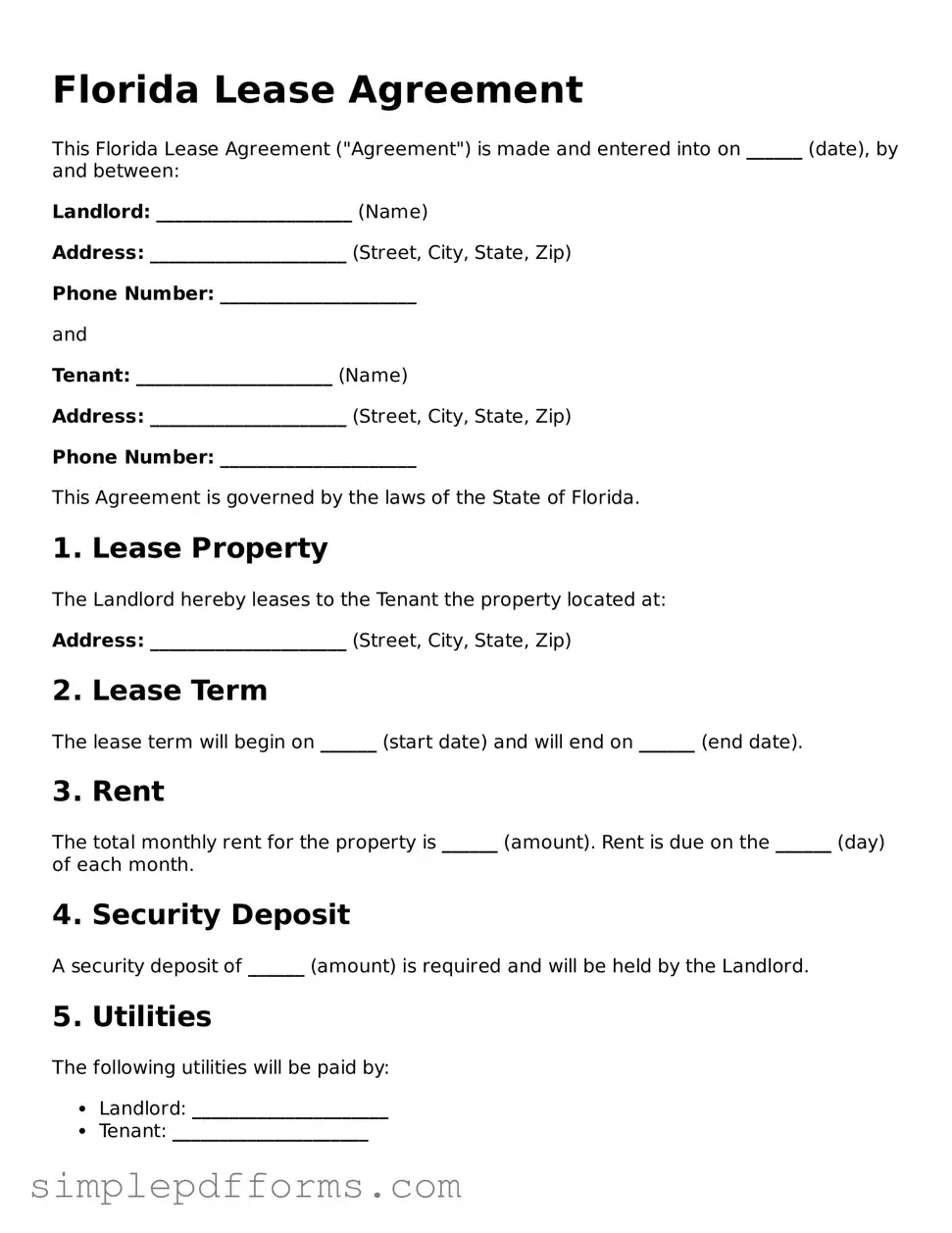Florida Lease Agreement
This Florida Lease Agreement ("Agreement") is made and entered into on ______ (date), by and between:
Landlord: _____________________ (Name)
Address: _____________________ (Street, City, State, Zip)
Phone Number: _____________________
and
Tenant: _____________________ (Name)
Address: _____________________ (Street, City, State, Zip)
Phone Number: _____________________
This Agreement is governed by the laws of the State of Florida.
1. Lease Property
The Landlord hereby leases to the Tenant the property located at:
Address: _____________________ (Street, City, State, Zip)
2. Lease Term
The lease term will begin on ______ (start date) and will end on ______ (end date).
3. Rent
The total monthly rent for the property is ______ (amount). Rent is due on the ______ (day) of each month.
4. Security Deposit
A security deposit of ______ (amount) is required and will be held by the Landlord.
5. Utilities
The following utilities will be paid by:
- Landlord: _____________________
- Tenant: _____________________
6. Maintenance and Repairs
The maintenance and repair responsibilities are as follows:
- Landlord is responsible for: _____________________
- Tenant is responsible for: _____________________
7. Termination
Either party may terminate this Agreement by providing written notice of ______ days.
Signatures
By signing below, both parties agree to the terms and conditions of this Lease Agreement.
Landlord Signature: _______________________ Date: ____________
Tenant Signature: _______________________ Date: ____________
This lease does not cover all possible situations and should be customized to fit individual needs.
